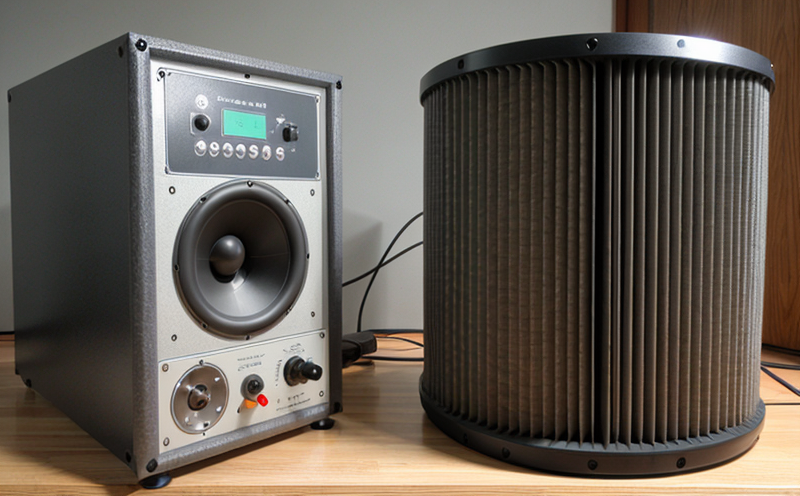ISO 3381 Measurement of Noise Inside Marine Passenger Areas
The ISO 3381 standard provides a comprehensive framework for measuring noise levels within marine passenger areas. This service is critical for ensuring that the acoustic environment aboard ships meets the comfort and safety requirements of passengers, crew, and manufacturers. Compliance with this standard helps prevent health issues such as hearing damage or stress due to excessive noise exposure.
According to ISO 3381, measurement should be conducted in accordance with the principles outlined in ISO 9612, which covers industrial, commercial and administrative areas. The standard specifically addresses noise levels inside spaces where passengers spend time, such as lounges, dining halls, and public rooms.
The testing process involves several key steps:
- Identification of the test area: This includes specifying the exact space to be measured.
- Sampling points: Sampling points are strategically placed throughout the passenger area to ensure an accurate representation of noise levels.
- Measurement setup: The measurement setup consists of a sound level meter that meets the requirements specified in ISO 61672, and a reference microphone.
The results of these measurements are used to determine compliance with the standard's permissible noise levels. These levels are based on the type and size of the passenger area and are designed to balance comfort and safety for all onboard passengers.
It is important to note that while ISO 3381 provides a framework, it does not specify exact permissible limits. The limits are typically set by shipbuilders or maritime authorities according to local regulations. However, common benchmarks include:
- For small passenger areas (e.g., staterooms): A maximum sound pressure level of 45 decibels.
- For larger public spaces: A maximum sound pressure level of 70 decibels during normal operation and 60 decibels during peak times.
The measurement process is conducted in accordance with ISO 3381, which stipulates that measurements should be taken at least three hours after the ship has reached its operating state. This ensures that any transient noise sources have had time to settle. Additionally, the standard recommends taking multiple readings over a period of 24 hours to account for variations throughout the day.
Once the measurements are complete, they are analyzed using statistical methods, such as calculating the weighted sound level and the A-weighted equivalent continuous sound level (LeqA). These calculations help to provide a comprehensive understanding of the noise environment within the passenger area. The results are then compared against the permissible limits specified in local regulations or company standards.
The importance of this service cannot be overstated, as it directly impacts the comfort and well-being of passengers. Excessive noise can lead to stress, sleep disturbances, and even hearing damage if not addressed properly. By adhering to ISO 3381, shipbuilders and operators demonstrate their commitment to passenger safety and satisfaction.
Our laboratory offers expert testing services that comply with the latest versions of this standard. Our team of experienced acousticians ensures accurate and reliable measurements, providing you with peace of mind regarding the acoustic environment aboard your vessel.
Why It Matters
The comfort and safety of passengers are paramount in the marine industry. Noise levels inside passenger areas can significantly impact these factors. Excessive noise has been linked to stress, sleep disturbances, and even hearing damage. By conducting regular measurements according to ISO 3381, ship operators ensure that their vessels meet the highest standards for acoustic comfort.
Compliance with this standard is not only a matter of comfort but also a legal requirement in many jurisdictions. Non-compliance can result in fines and reputational damage. Our laboratory ensures that your vessel meets all relevant standards, helping you avoid these pitfalls.
In addition to compliance, regular noise measurements provide valuable insights into the performance of sound insulation materials used in ship construction. This data can be used to optimize future designs and improve overall passenger satisfaction.
Industry Applications
- Shipbuilding: Ensuring that new vessels meet noise standards is crucial for both compliance with regulations and customer satisfaction.
- Maritime Authorities: Compliance checks are essential to ensure that all ships operating within a jurisdiction adhere to the latest safety and comfort standards.
- Passenger Ships: Regular testing helps operators maintain an optimal acoustic environment, enhancing passenger experience.
Our laboratory offers comprehensive support for these applications, providing expert advice and reliable test results. Whether you are involved in new construction or ongoing maintenance, our services can help you stay compliant and improve the quality of life aboard your vessel.
Customer Impact and Satisfaction
- Enhanced Passenger Comfort: By adhering to ISO 3381, ship operators ensure that their passengers experience a quieter, more comfortable environment.
- Better Reputation: Compliance with international standards enhances the reputation of your vessel and contributes positively to brand image.
- Increased Safety: Comfortable acoustic environments contribute to overall passenger safety by reducing stress and enhancing alertness.
In addition to these benefits, our laboratory's services also help operators maintain a competitive edge in the market. By providing reliable test results and expert advice, we ensure that your vessel remains at the forefront of maritime innovation.





